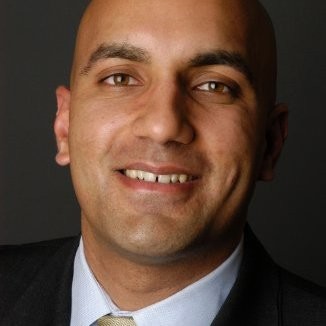… as GIIN’s 10th survey supports ‘impact’ trend
by David Chaplin
Almost all impact investors hit both monetary and non-financial targets in 2019, according to the 10th annual global survey of the sector. The Global Impact Investing Network (GIIN) survey of about 300 investors worldwide, including one in Australia, found that the overwhelming majority of respondents reported meeting or exceeding both their impact expectations and their financial expectations.
The figure from the survey were 99 per cent believed they had met their expectations and 88 per cent felt they had exceeded their expectations. Financial performance remains a “hallmark characteristic of impact investing”, the GINN report says, albeit across a wide range of expectations.
“This year, just over two-thirds of respondents principally target risk-adjusted, market-rate returns, while the remaining third are split closely between below-market-rate: closer to market-rate (18 per cent), and below-market-rate: closer to capital preservation,” the paper says.
But many impact investors expect to underperform, in financial terms at least, post the COVID-19 economic disruption. While the main survey was completed just as the coronavirus global crisis deepened in March, a follow-up GIIN questionnaire found “almost half (46 per cent) expect their portfolios to underperform their expectations”
“… although more than a third (34 per cent) still expect their performance to meet their expectations,” the report says.
“Interestingly, a much lower proportion expect to underperform on impact-just 16 per cent – while almost half expect performance to meet their expectations and a notable 18 per cent expect their portfolios to outperform their expectations for impact.”
At the same time, over 80 per cent of those surveyed expect market risk to rise in the wake of the pandemic while only about half that proportion (43 per cent) agreed that impact risks would spike up.
“Most respondents indicated that they are unlikely to change the amount of capital they had planned to commit to impact investments in 2020 as a result of the COVID-19 pandemic (57 per cent),” the GIIN study says. “However, 20 per cent are at least somewhat likely to commit less capital than they had planned; 15 per cent are likely to commit more.”
The coronavirus crisis, though, could just be a temporary blip for a sector that has seen rapid growth and maturing practices over the last 10 years.
Amit Bouri, GIIN co-founder and chief, says in the report that the latest results showcase an “impressive decade of market evolution”.
“Our 2010 report relied on data from just 24 members of the GIIN’s Investors’ Council,” Bouri says. “This year, the survey provides insights from our largest number of respondents ever: nearly 300 of the world’s leading impact investors, who collectively manage USD 404 billion in impact investment assets.” GIIN, however, estimates the total impact investing market at about US$715 billion worldwide.
The impact boom, which is reverberating in Australia and New Zealand of late, has also created new opportunities for the fund management industry. According to the GINN study, almost 40 per cent of respondents “reported investing through asset managers, including fund or investment managers”.
“Respondents who invest indirectly allocate a median of 58 per cent of their impact investing assets into funds or other investment intermediaries,” the report says. “Twenty-nine percent of those investing through asset managers are foundations, followed by for-profit asset managers (26 per cent) and [diversified financial institutions] DFIs (12 per cent).”
However, about a quarter of impact investors cited ‘lack of track record’ and a paucity of product offerings as barriers to investing via external fund managers.
“Interestingly, most respondents do not perceive logistical considerations as particularly challenging when investing through asset managers, such as working across geographies or the need for in-house expertise to understand funds’ strategies,” the GIIN report says.
The 186 fund managers captured by the survey held about US$125 billion in impact assets under management (AUM) as at the end of last year.
Popular impact investment target sectors include energy, financial services and agriculture. “Food [and] agriculture, which accounts for 9 per cent of sample AUM (excluding outliers), is the most popular sector, with 57 per cent of respondents having some allocation,” GIIN says.
The 104-page report covers the impact sector in depth across factors such as source of funds, asset allocation, capital-raising plans, geographical exposure and performance.
Impact investing has also evolved more sophisticated and standardised approaches to measuring environmental, social and governance (ESG) outcomes, the study says.
Over 70 per cent of those surveyed gauge impact against the UN Sustainable Development Goals (SDGs) while 46 per cent use the ‘IRIS Catalog of Metrics’. A further 36 per cent refer to the more advanced ‘IRIS+ Core Metrics Sets’ to measure fund impacts.
“Most investors use a blend of these resources to help them understand, measure, and manage their impact,” the report says. “The vast majority (89 per cent) use at least one external resource in their [impact measurement] practice.”
– Investment News NZ











